Resources
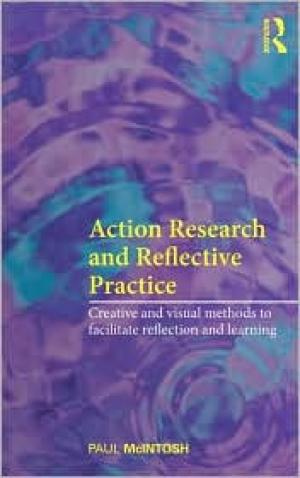
The use of reflection as a tool to support and develop practice is becoming increasingly recognised across education, healthcare and the social sciences. Reflection is assumed to create depth of knowledge and meaning, both for self and those practised upon. Running alongside the use of reflection is the prevalent use of action research which some see as a way of approaching the study of human beings from a philosophical perspective, in which sharing takes place within mutually supportive environments. As a result, many academics and practitioners suggest that one cannot improve the methodology of action research without considering philosophical reflection. In Action Research and Reflective Practice, the author argues that reflective practice and action research can become mechanistic in their use unless fresh creative approaches are employed. Exploring the tension between the use of evidence-based practice, based upon solid ‘objective’ research, and reflection, with its ‘subjectivity’ and personal perception, this book argues that reflection is research. The author increases the use and effectiveness of both action research and reflection through the application of new creative and visual approaches. Action Research and Reflective Practice demonstrates that creative approaches can be utilised effectively in critically reflexive ways, creating a new style of action research that is both innovative and theoretically robust. The resultant approach will improve evidence-based research in education, healthcare and other social sciences to enhance perception and understanding of events, identity and self. This book will be highly beneficial to undergraduate and postgraduate students, as well as educational and social researchers, across a broad range of subjects within the social sciences. (From the Publisher)
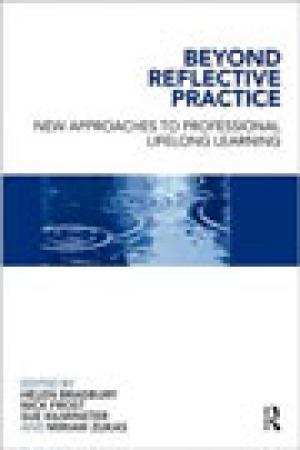
Reflective practice has moved from the margins to the mainstream of professional education. However, in this process, its radical potential has been subsumed by individualistic, rather than situated, understandings of practice. Presenting critical perspectives that challenge the current paradigm, this book aims to move beyond reflective practice. It proposes new conceptualisations and offers fresh approaches relevant across professions. Contributors include both academics and practitioners concerned with the training and development of professionals. Definitions of reflection (which are often implicit) often focus on the individual's internal thought processes and responsibility for their actions. The individual - what they did/thought/felt – is emphasised with little recognition of context, power dynamics or ideological challenge. This book presents the work of practitioners, educators, academics and researchers who see this as problematic and are moving towards a more critical approach to reflective practice. With an overview from the editors and fourteen chapters considering new conceptualisations, professional perspectives and new practices, Beyond Reflective Practice examines what new forms of professional reflective practice are emerging. It examines in particular the relationships between reflective practitioners and those upon whom they practise. It looks at the ways in which the world of professional work has changed and the ways in which professional practice needs to change to meet the needs of this new world. It will be relevant for those concerned with initial and ongoing professional learning, both in work and in educational contexts. (From the Publisher)
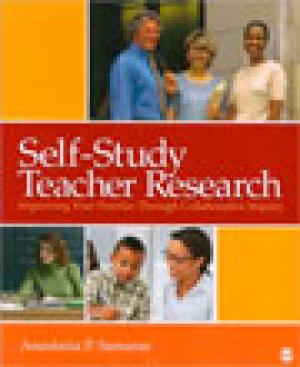
The first textbook to offer novice and experienced teachers guidelines for the “how” and “why” of self-study teacher research Designed to help pre- and in-service teachers plan, implement, and assess a manageable self-study research project, this unique textbook covers the foundation, history, theoretical underpinnings, and methods of self-study research. Author Anastasia Samaras encourages readers to think deeply about both the “how” and the “why” of this essential professional development tool as they pose questions and formulate personal theories to improve professional practice. Written in a reader-friendly style and filled with interactive activities and examples, the book helps teachers every step of the way as they learn and refine research skills; conduct a literature review; design a research study; work in validation groups; collect and analyze data; interpret findings; develop skills in peer critique and review; and write, present, and publish their studies. Key Features • A Self-Study Project Planner assists teachers in understanding both the details and process of conducting self-study research. • A Critical Friends Portfolio includes innovative critical collaborative inquiries to support the completion of a high quality final research project. • Advice from the most senior self-study academics working in the U.S. and internationally is included, along with descriptions of the self-study methodology that has been refined over time. • Examples demonstrate the connections between self-study research, teachers’ professional growth, and their students’ learning. • Tables, charts, and visuals help readers see the big picture and stay organized. (From the Publisher)
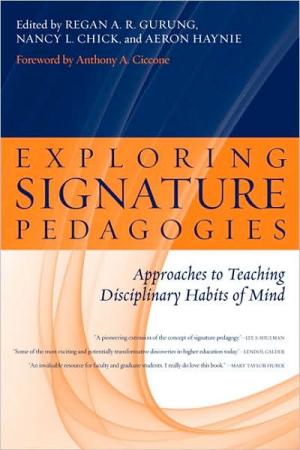
From the Foreword These authors have clearly shown the value in looking for the signature pedagogies of their disciplines. Nothing uncovers hidden assumptions about desired knowledge, skills, and dispositions better than a careful examination of our most cherished practices. The authors inspire specialists in other disciplines to do the same. Furthermore, they invite other colleagues to explore whether relatively new, interdisciplinary fields such as Women's Studies and Global Studies have, or should have, a signature pedagogy consistent with their understanding of what it means to 'apprentice' in these areas. How do individual disciplines foster deep learning, and get students to think like disciplinary experts? With contributions from the sciences, humanities, and the arts, this book critically explores how to best foster student learning within and across the disciplines. This book represents a major advance in the Scholarship of Teaching and Learning (SoTL) by moving beyond individual case studies, best practices, and the work of individual scholars, to focus on the unique content and characteristic pedagogies of major disciplines. Each chapter begins by summarizing the SoTL literature on the pedagogies of a specific discipline, and by examining and analyzing its traditional practices, paying particular attention to how faculty evaluate success. Each concludes by the articulating for its discipline the elements of a "signature pedagogy" that will improve teaching and learning, and by offering an agenda for futureresearch. Each chapter explores what the pedagogical literature of the discipline suggests are the optimal ways to teach material in that field, and to verify the resulting learning. Each author is concerned about how to engage students in the ways of knowing, the habits of mind, and the values used by experts in his or her field. Readers will not only benefit from the chapters most relevant to their disciplines. As faculty members consider how their courses fit into the broader curriculum and relate to the other disciplines, and design learning activities and goals not only within the discipline but also within the broader objectives of liberal education, they will appreciate the cross-disciplinary understandings this book affords. (From the Publisher)
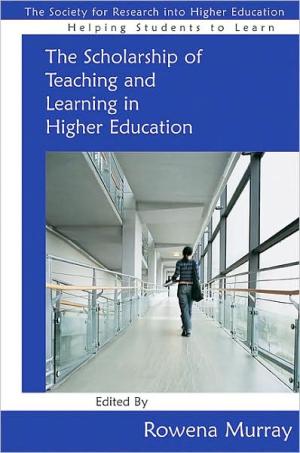
This book is designed for lecturers on a wide range of professional courses. It directly addresses questions that come up again and again in seminar discussions; questions that are fundamental to the values and perspectives of academics across the disciplines: • What is meant by the scholarship of teaching and learning in higher education? • What is the purpose of higher education? • Are lecturers really 'students' on these courses? • How do you do 'reflective' writing? • What do we do with all this theory and jargon? • What does CPD in this area involve? • How do you do 'research' on teaching and learning? This book does not treat each element of the curriculum separately – course design, assessment, evaluation of teaching etc. – since that approach has been well handled by others. Instead, like other books in the series, it addresses elements of the curriculum in an integrated way, thereby educating the reader in how to approach a range of higher education related issues. This book provides a scholarly introduction to the literature on these questions. Like other books in the series, it offers a concise treatment of complex questions. It also provides directions for future study. (From the Publisher)
The first seven volumes of the American Academy of Religion's "Teaching Religious Studies" series provide informative glimpses of how teachers in very different contexts understand the intellectual decisions, strategies, and actions that constitute their craft. Although individual volumes have different formats, the dominant image of good teaching that emerges is that it is founded on deep and sophisticated knowledge of the particular subject matter. Beyond that, many essays provide instructive anatomies of particular syllabi, moments in the classroom, or other aspects of teaching. Much of the material in the essays comes from reflective practitioners and there is relatively little sustained engagement with the contemporary literature on teaching and learning. Nonetheless, virtually any teacher can find in these volumes stimulating reflections on the intersections of substantive research and pedagogy in a variety of classroom contexts.
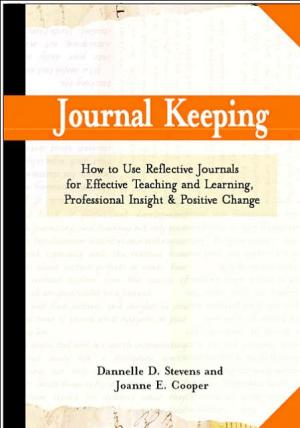
** By the authors of the acclaimed Introduction to Rubrics ** Major growth of interest in keeping journals or diaries for personal reflection and growth; and as a teaching tool ** Will appeal to college faculty, administrators and teachers One of the most powerful ways to learn, reflect and make sense of our lives is through journal keeping. This book presents the potential uses and benefits of journals for personal and professional development-particularly for those in academic life; and demonstrates journals' potential to foster college students' learning, fluency and voice, and creative thinking. In professional life, a journal helps to organize, prioritize and address the many expectations of a faculty member's or administrator's roles. Journals are effective for developing time management skills, building problem-solving skills, fostering insight, and decreasing stress. Both writing and rereading journal entries allow the journal keeper to document thinking; to track changes and review observations; and to examine assumptions and so gain fresh perspectives and insights over past events. The authors present the background to help readers make an informed decision about the value of journals and to determine whether journals will fit appropriately with their teaching objectives or help manage their personal and professional lives. They offer insights and advice on selecting the format or formats and techniques most appropriate for the reader's purposes. (From the Publisher)
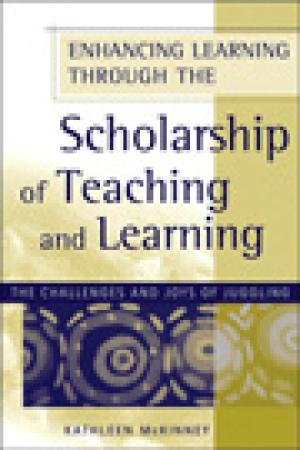
The Challenges and Joys of Juggling There has been growing demand for workshops and materials to help those in higher education conduct and use the scholarship of teaching and learning. This book offers advice on how to do, share, and apply SoTL work to improve student learning and development. Written for college-level faculty members as well as faculty developers, administrators, academic staff, and graduate students, this book will also help undergraduate students collaborating with faculty on SoTL projects. Though targeted at those new to the field of SoTL, more seasoned SoTL researchers and those attempting to support SoTL efforts will find the book valuable. It can be used as an individual reading, a shared reading in SoTL writing circles, a resource in workshops on SoTL, and a text in seminars on teaching. Contents include: * Defining SoTL * The functions, value, rewards, and standards for SoTL work * Working with colleagues, involving students, writing grants, integrating SoTL into your professional life, and finding useful resources * Practical and ethical issues associated with SoTL work * Making your SoTL public and documenting your work * The status of SoTL in disciplinary and institutional contexts * Applying the goals of SoTL to enhance student learning and development. (From the Publisher)
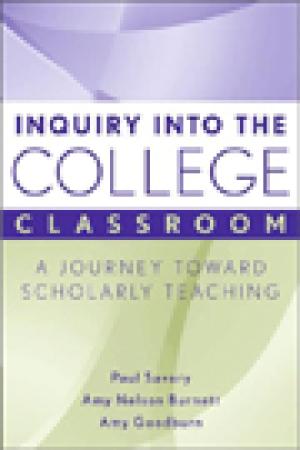
An essential companion for university faculty interested in conducting scholarly inquiry into their classroom teaching, this practical guide presents a formal model for making visible the careful, difficult, and intentional scholarly work entailed in exploring a teaching question. As a how-to guide, this is an invaluable resource for planning and conducting classroom research—formulating questions and hypotheses, defining a data collection methodology, collecting data, measuring the impact, and documenting the results. Inquiry Into the College Classroom is filled with richly illustrative examples that highlight how university faculty from a range of academic disciplines have performed scholarly inquiries into their teaching and leads faculty on a journey that includes: * Developing a formal model for structuring the exploration of a classroom inquiry question * Providing a practical and useful guide for faculty interested in exploring teaching and learning challenges * Detailing faculty experiences in measuring specific changes in student learning or perspectives * Demonstrating how to document classroom inquiry in a form to be shared, used, and reviewed by other faculty * Sharing useful and practical suggestions for getting started with a classroom inquiry * Highlighting different models for disseminating classroom inquiry work * Linking classroom inquiry to larger conversations about the scholarship of teaching and learning (From the Publisher)